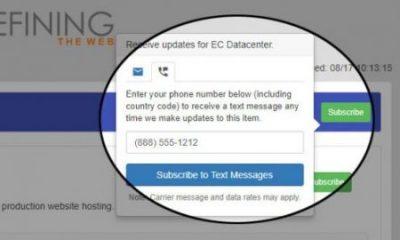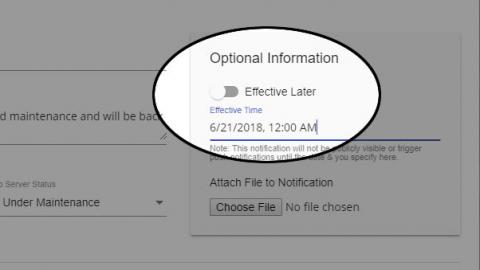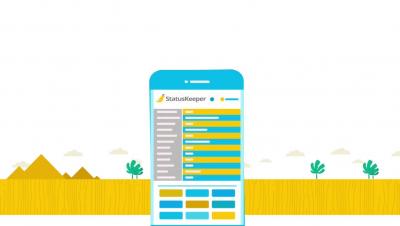Operations | Monitoring | ITSM | DevOps | Cloud
StatusKeeper
New Feature Spotlight:StatusKeeper welcomes SMS/text notifications to your hosted status page!
Email arrives constantly; when we’re in the office or “on the go”. More than occasionally a new email might be briefly overlooked if we’re working another task or it just gets lost in the “noise”. Whatever the case, they don’t always get the attention that an incoming text message might.
New Feature Spotlight: Notification Attachments
Continuing deeper exploration of some of our exciting new features, today I’ll be presenting Notification Attachments and demonstrating how your status page can, once again, hopefully make your job a little easier. We recently had a customer ask: “Is there a way to show a maintenance page instead of [just] an icon if the web services are down?”. Further investigation revealed he was looking for the ability to provide more information to his users regarding the nature of a system outage.
New Feature Spotlight: Scheduled Notifications
As you may be aware, we recently rolled out some exciting new features to your off-site status page. In the coming weeks, I’ll be highlighting some of these and taking a closer look at how each may be used to enhance your experience with StatusKeeper and hopefully make your job a little easier.
Why you need an off-site StatusKeeper Status Page
How a Status Page Can Be Your One-Stop Crisis Management Platform
Whether there’s a crisis or scheduled maintenance on your servers, you need to keep your customers informed during these down times. Instead of using multiple tools in your crisis management process, your IT team can use one platform. Status pages can solve multiple issues in one location instead of using your web page, email, phone and ticket system to notify customers. This also helps to let them know about maintenance updates before they happen.
Five Status Page Messages to Send During an Outage
During a server outage, your IT team can feel pulled in two different directions: First, having to communicate with customers about the issue and second, fixing the actual problem. Since you want to keep your customers informed while working to resolve the issue, there’s a solution tailored to your team: A status page can help you communicate while keeping pages updated with specific, clearly-written automated messages.
What Really Happens in IT During an Outage?
A typical workday for your IT team may go from calm to all hands on deck. When a problem occurs on your servers, you may not know the cause right away, but before you can start figuring it out, customers are blowing up your phone and monitoring systems. Everything you do from this point has a timestamp attached to it. If you wait five minutes to put up a status page, that could equal 100 people who have submitted tickets. The longer you wait, the more people you will have to get back to.
Four Reasons Your Daycare Needs a Status Page
A snow delay can throw a wrench into your typical workday at the daycare center — especially if you’re fielding emails and phone calls from concerned parents. When you start receiving these emails, phone calls or texts from parents asking whether to pack their kids’ lunches, you may have to answer each of message in an emergency. This can snowball into calls or emails asking for more information about the snow delay.
Three Reasons Why Your Business Needs a Status Page
An outage with one, several or all of your servers is hectic enough, but add in a stream of emails and phone calls from concerned customers and you’ve got a full-on situation. When you start receiving these emails, phone calls or texts from clients who need access to their applications on these servers, you may have to individually answer each request in an emergency or during scheduled maintenance.











